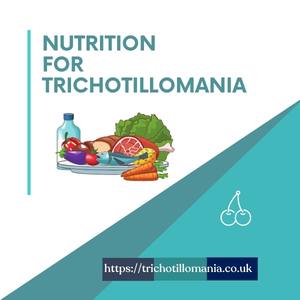Assessing themes that may contribute to individuals developing Trichotillomania
By Barbara Doughty, Trichotillomania Support, 2010
Introduction and rationale
This study aims to investigate the possible aetiology of Trichotillomania; Trichotillomania is an impulse control disorder characterised by the sufferer pulling out their own hair. The hair can be pulled from any part of the body, although the scalp, eyebrows and eyelashes are most often cited as the most affected areas.
The disorder has always held a cultural resonance with many and is mentioned in passing by Homer, Shakespeare and even in the Bible, so has clearly been fairly prevalent for thousands of years. It is officially recognised in the Diagnostic and Statistical Manual of Disorders (DSM IV). Despite these factors research into Trichotillomania has never been widely undertaken and little is known about many aspects of the condition.
The diagnostic criteria required by DSM IV are as follows;
- Recurrent pulling of one’s hair resulting in noticeable hair loss.
- An increased sense of tension immediately before pulling out the hair or when attempting to resist the behaviour.
- Pleasure, gratification or relief when pulling out the hair.
- The disturbance is not better accounted for by another mental disorder and is not due to a general medical condition (e.g. a dermatological condition).
- The disturbance causes clinical significant distress or impairment in social, occupational or other important areas of functioning.
Even the diagnostic criteria of Trichotillomania is seen as contentious by some, Christenson et al (1991)and Shlosser et al 1994 (in Stein, Christenson and Hollander 1999) found that a significant number of sufferers (between 17 and 23%) taken from a clinical sample lacked either criterion B or C. But still exhibited meaningful hair pulling that fulfilled the other criteria.
High instances of comorbidity also sometimes make diagnosis difficult, relatively high numbers of those afflicted with Trichotillomania also present with symptoms of depression, anxiety and OCD, which can cause clinicians to view the hair pulling as a symptom of the patients other disorder rather than an additional condition in its own right.
Prevalence has been approximated at around 4% of the general population, although sufferers’ shame and embarrassment regarding their affliction can often mean that help is not sought and the condition remains unnoticed. The above mentioned diagnostic difficulties also play a part in possibly negatively distorting the true number of sufferers.
The age of onset is typically around the age of thirteen, sufferers attribute the onset of the disorder to a variety of occurrences such as Parental divorce, moving house, the birth of a sibling, separation from childhood friends, the end of childhood and the beginning of puberty. (It has been noted that many of these situations share the central themes of loss or perceived loss). The research deems it pertinent to explore the psychological mechanisms or deficiencies behind the individuals’ battle with urges to pull their hair.
A study by Soriano, O’Sullivan and Baer (1996) into the effects of self esteem on Trichotillomania found that Self esteem does affect certain aspects of the disorder, namely; frequency of hair pulling, anxiety and body dissatisfaction. The severity of pulling and age of onset were not seen as affected by sufferers self esteem levels.
In relation to the possibility that Trichotillomania’s aetiology may have a basis in personality type or characteristics, a study was undertaken by Hagh-Shenas, Moradi, Deh bozorgi, Farashbandi and Alishahian (2004). Results suggested that when compared to age matched non sufferers the group of sufferers being studied exhibited higher levels of neuroticism, including the subscales of anxiety, angry-hostility, depression, self-consciousness, impulsivity and vulnerability to stress. Hagh-Shenas et al went as far as to claim that according to the founders of the personality measure they employed – the NEO PI-R by McRae and Costa – the results of the study resembles that of those suffering from Borderline Personality Disorder.
There is no readily available data showing investigations into a possible relationship between childhood and family relationships, however it is a point frequently alluded to by sufferers of the disorder on the support website Trichotillomania Support UK.
As the complexity of the disorder leads to problems even in diagnosis the researcher has concluded that the most appropriate strategy for inquiry involves trying to understand the subjective views and experiences of sufferers from interviews. The chosen themes for this study are Personality, Self Esteem and Childhood Relationships.
The proposed research questions for exploration are as follows:
- Do sufferers feel that their self esteem has any bearing on their Trichotillomania?
- Do sufferers feel there is any relationship between their personality type and the disorder?
- How do they feel their childhood affected their propensity for hair pulling?
Methodology
In light of the information presented above, the most appropriate strategy for inquiry in this instance has been identified as the Phenomenological approach. This will enable the exploration of the deeply personal themes associated with Trichotillomania that have been identified for discussion, whilst also limiting the capacity for interviewer biases. Methods used will include unstructured interviews, which although subject to distortion and dilution will enable the interviewer to ensure all themes are included for the interviewees’ subjective appraisal.
Validity will be protected by the procedure for participants to check and modify the researcher’s reports prior to publication. This will help identify any biases introduced by the researcher and allow the true voice and subjective experience of participants to be heard.
Author Biases
The researcher works part time for Trichotillomania Support UK whilst studying Psychology at Bournemouth University. The researcher does not suffer from the disorder but has an academic interest in the subject and has identified it as an area worthy of further psychological inquiry.
Participants
The chosen sampling technique in this instance will be Purposive Sampling using volunteers who use the support website Trichotillomania Support UK. Volunteers will have their expenses paid to travel to a central London Hotel for the study. Ten participants will be chosen (deemed an appropriate number for Phenomenological studies by Creswell 1998). Participants will be asked to provide informed consent prior to participation in the study, they will also be asked to fill out a short questionnaire relating to their subjective views on which of the Diagnostic criteria for Trichotillomania outlined above they personally fulfil.
Interview Techniques
Interviews will continue until interviewees are no longer introducing new information and themes to the discourse, then the interviewer will deem the discussion about the phenomena exhausted or saturated.
Information Storing Methods
All interview will be audio recorded (with the prior permission of the interviewees), and coded with the date and an identifying code for each participant. The files will be code protected on a personal computer. After each interview notes will be transcribed, key phrases will be noted to attempt to allow the voices of individual participants to speak.
Various types of field notes will also be taken during and shortly after each interview, these include; Observational notes; stating what happened during the interview, Theoretical notes; potentially forming the beginnings of theory generation, Methodological notes to act as reminder to the interviewer when necessary and finally analytical notes which will act as summaries of the interviews as a whole.
Explicitation of the Information
From a phenomenological theoretical standpoint using the term analysis would go against the essence of the strategy for enquiry. Explicitation refers to the attempt to explore the roots and causes of the phenomena whilst retaining the context of the whole phenomena (Groenewald 2004).
Firstly each recording will be listened to repeatedly so that the researcher can get a sense of the essence of the participant’s viewpoint. Next units of meaning will be extracted from the discourse, this is always a subjective experience and the researcher will at all times be aware of not allowing their preconceptions to colour the report of the participants’ experiences. The number of times an individual unit is mentioned and the context it was mentioned in will be taken into account during these judgements made by the researcher.
Next single units will be clustered to form significant topics; this is done by examining individual units of information in the holistic context of the subject matter as a whole. Significant topics will be defined and units grouped accordingly.
Next each interview will be summarised, with the themes and topics identified explained in terms of the subject holistically. Next the reports will be given to the participants so that they can check the validity of the researchers reports, at this point any necessary changes can be made.
Finally a summary will be produced that indentifies the general and unique themes of each interview, identifying topics that are discussed by different participants, showing the differences and similarities in their personal experiences.
Adaption of study
The rich experience provided by the qualitative strategies for enquiry outlined above is an important factor for inductive theory generation in an area as understudied as that of Trichotillomania. The atmosphere the enquiries will be conducted under will aid the true feelings and experiences of sufferers to be able to be recorded. After this stage of enquiry it would be important to examine the themes and ideas generated in a quantitative fashion. As the central themes suggested for qualitative enquiry seem to be interwoven and causation between them would be difficult to infer, it would be useful to conduct a multiple regression analysis to examine the relationships between self esteem, personality type, childhood experiences and Trichotillomania.
To adapt this study so that it could be undertaken in a quantitative non experimental fashion the following changes would be made; instead of interviewing participants they would be asked to fill in questionnaires relating to the areas to be examined. Costa and McCrae’s NEO PI-R would be used to assess personality in the same way as the previously cited study by Hagh-Shenas et al. The self esteem measure used would be ‘The Rosenberg Self esteem scale’ (1965) as this scale is widely used and its results are deemed robust by many. The measure chosen to assess family relationships is the “Adult Attachment Interview” (Main and Goldwyn, 1993 in Sonkin 2005). This was chosen as it is currently in use by Charizma Communities (Trichotillomania Support) as a diagnostic and Therapeutic tool, as an expert in her field she feels this measure is best suited to assessing how childhood experiences and relationships affect adult behaviour.
The Massachusetts General Hospital Hairpulling Scale be administered to assess severity of hair pulling forming the criterion variable for the analysis. This scale has been chosen as appropriate as a study relating to it’s reliability and validity found that the “Scale demonstrated test-retest reliability, convergent and divergent validity, and sensitivity to change in hairpulling symptoms” ( O’Sullivan, Keuthen, Hayday, Ricciardi, Buttolph, Jenike & Baer).
The adaptations to the study mean that it would no longer be constrained by time consuming nature and methodological factors associated with qualitative research meaning that more participants data could be collected (at least 74 Participants to fulfil the necessary assumptions to conduct the multiple regression analysis) using the website Trichotillomania Support UK. More participants and statistical results showing relationships between the variables would further aid research into the condition.



